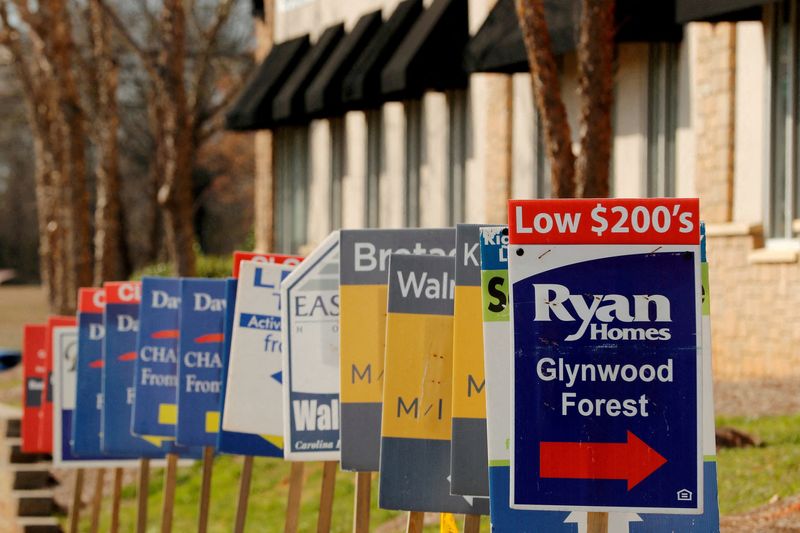A third of would-be buyers cannot find affordable US homes -NAR
2023.09.14 10:40

© Reuters. FILE PHOTO: Real estate signs advertise new homes for sale in multiple new developments in York County, South Carolina, U.S., February 29, 2020. REUTERS/Lucas Jackson/File Photo
By Amina Niasse
NEW YORK (Reuters) – Too few affordable homes on the market and interest rates at their highest in decades are the top reasons keeping prospective U.S. home buyers from making a purchase, according to a pair of real estate industry surveys released on Thursday.
One survey of agents by the National Association of Realtors found 34% of their customers who had yet to make a purchase cited a lack of affordable houses on the market as the No. 1 barrier to home ownership. Another 18% said their clients were waiting for interest rates to drop.
That finding was largely echoed in a companion survey of prospective buyers – designed by NAR and conducted by research firm Morning Consult – that found high prices and borrowing costs as the primary impediments to buying a house.
Home prices themselves, in fact, were the largest source of hesitation among prospective Black, Hispanic and Asian buyers, while whites were equally as concerned about mortgage rates.
The housing market has been especially sensitive to the Federal Reserve’s efforts to curb inflation and soften demand through aggressive interest rate increases since March 2022. Many existing homeowners who locked in cheaper mortgage rates before the Fed began its rate hike cycle are choosing not to sell, worsening the market’s supply shortage.
The average contract rate on a 30-year fixed-rate mortgage rate climbed to 7.27% during the week ended Sept. 8, according to the Mortgage Bankers Association, just shy of last month’s highest rate in more than two decades.
Repeat-buyers were twice as likely to wait for home prices to fall when compared to first-time buyers, the survey conducted by NAR found. Buyers considered Gen-X born between 1965 and 1981 or Baby Boomers born before 1965 claimed to be waiting for mortgage rates to drop at a higher frequency than younger buyers.








